The School of Pure Vision
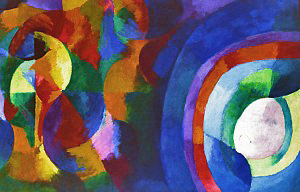 In the middle of the 19th century, the impressionists rebelled against the Romantic and Neo-classic painters. They banned any intellectual content from art and rediscovered the visual approach. They told about their visually sensual impressions in the language of colors and about atmospheres instead of anecdotic or historical stories. Due to their color theories, however, there emerged new dogmas which led to new limitations, such as the avoidance of the use of black. In subsequent generations these rules were thrown by the wayside and painters searched for the origin of artistic expression in different ways.
In the middle of the 19th century, the impressionists rebelled against the Romantic and Neo-classic painters. They banned any intellectual content from art and rediscovered the visual approach. They told about their visually sensual impressions in the language of colors and about atmospheres instead of anecdotic or historical stories. Due to their color theories, however, there emerged new dogmas which led to new limitations, such as the avoidance of the use of black. In subsequent generations these rules were thrown by the wayside and painters searched for the origin of artistic expression in different ways. 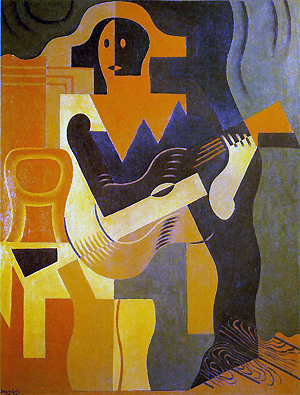
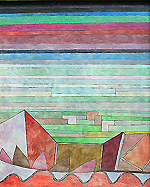 Painters such as Kandinsky, Malevich, Delaunay, Mondrian, Klee and Itten were searching for "pure reality", "pure energy", "pure vitality", "pure colors", "pure compositions", and "pure visions". They advocated distance from the object, the importance of pure colors and surfaces, and a move towards abstraction with new theories of art and color.
Painters such as Kandinsky, Malevich, Delaunay, Mondrian, Klee and Itten were searching for "pure reality", "pure energy", "pure vitality", "pure colors", "pure compositions", and "pure visions". They advocated distance from the object, the importance of pure colors and surfaces, and a move towards abstraction with new theories of art and color. With his School of Pure Vision, Egon von Vietinghoff shared their ideas and freed himself from naturalism in his way. He shared the others' criticism of the academic naturalism and other trends which the Post-impressionist generations resisted so vehemently. A few of Vietinghoff’s paintings in the cubist manner showed the single time when his views aligned with the zeitgeist, and this only in his twenties. Like Mondrian (1872-1944), Vlaminck (1876-1958), Delaunay (1885-1941), and Massimo Campigli (1895-1971) he turned away from cubism. Similar to a childhood disease, after this episode, he was immune to all other fads of the art world.
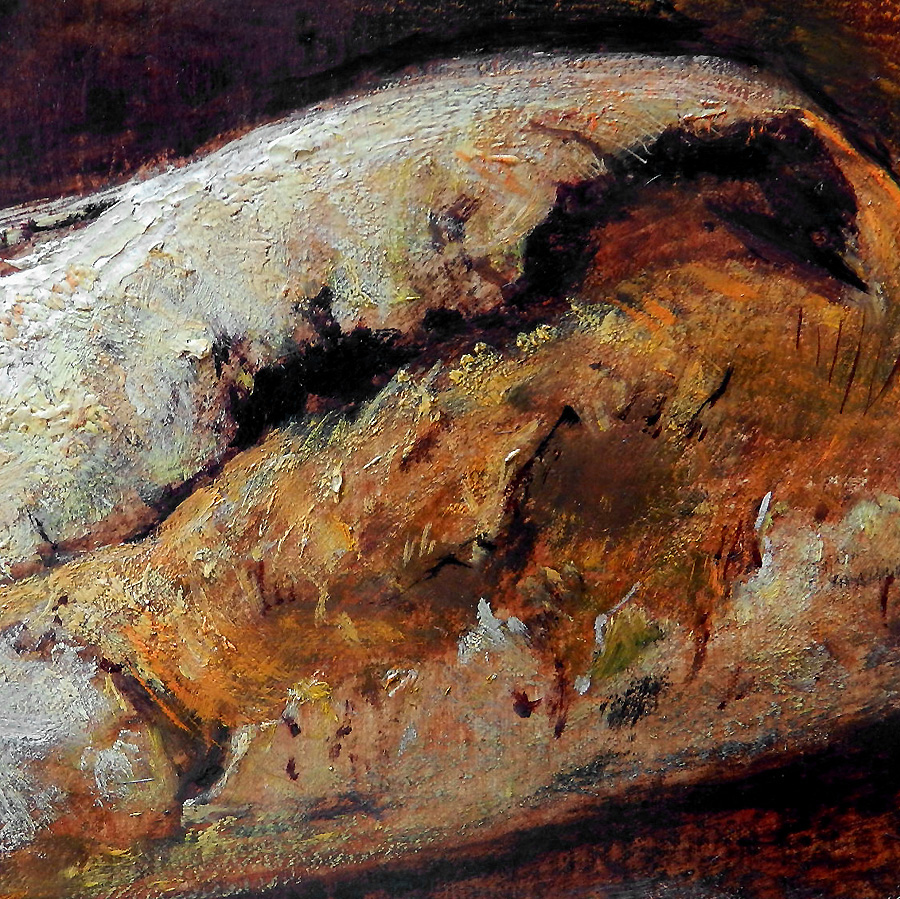 Despite common dissatisfaction, concurring fundamental ideas and related goals, his logic led him to opposite conclusions from his peers. With his philosophy of the Transcendental Painting, he offered an alternative answer to the crisis in visual arts.
Despite common dissatisfaction, concurring fundamental ideas and related goals, his logic led him to opposite conclusions from his peers. With his philosophy of the Transcendental Painting, he offered an alternative answer to the crisis in visual arts. He brought his authentic inner experiences into his method of the Pure Vision which defines the comprehension of the inner dynamic of colors and light from a given subject. Then, the view is "non-figurative" and abstract, and the visible is told in a meditative way from inside.
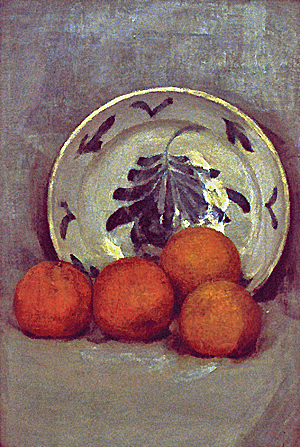
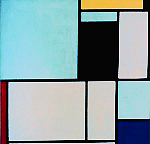 Thus, the School of Pure Vision is both a visual and mental training for a view free from intellect.
Thus, the School of Pure Vision is both a visual and mental training for a view free from intellect.In his sense, non-figurative and pure do not mean free from natural properties, i.e. symbolic or "sterile" in the sense of geometric or flat. Pure vision means pure sensory feeling due to pure perception. Pure means "unadulterated", neither by addition of knowledge, experience or intention nor by suppression of individual properties of the subject leading to abstract figures. Unadulterated also means free of voluntary distortion or alienation of the natural appearance.
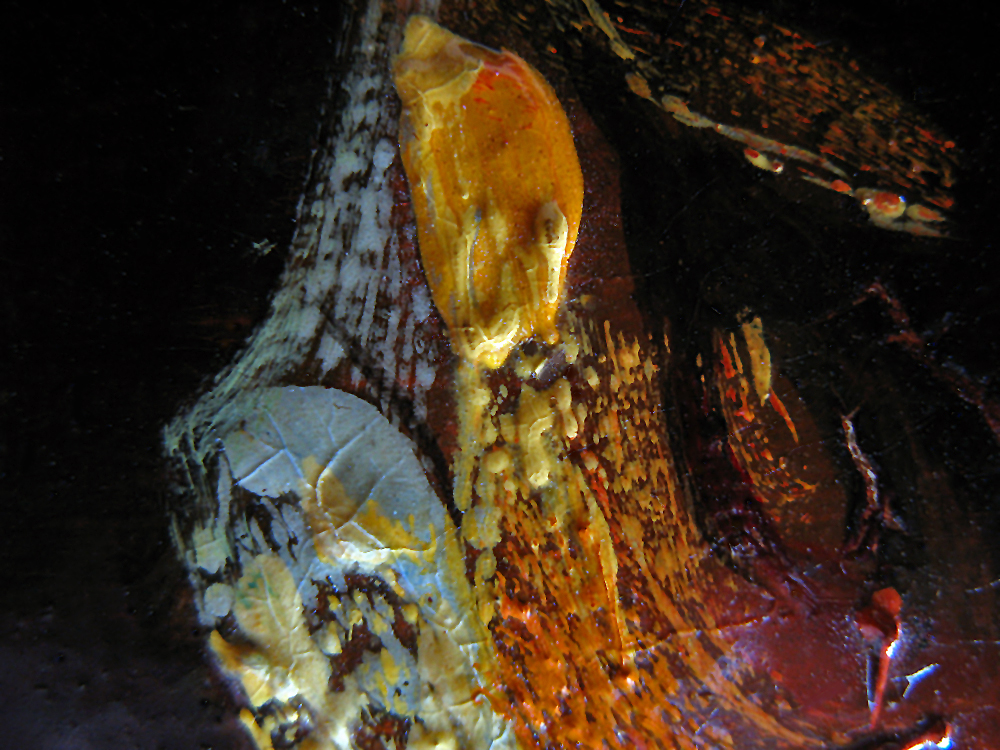 Vietinghoff's point is to accept what is and how it exists and to be impartially open to the transformation which the artist undergoes during the contact with his vision. The mystic experience should transform the beholder rather than the artist transforming the phenomena.
Vietinghoff's point is to accept what is and how it exists and to be impartially open to the transformation which the artist undergoes during the contact with his vision. The mystic experience should transform the beholder rather than the artist transforming the phenomena.According to Egon von Vietinghoff, non-figurative and "abstract" mean pure visual and solely based on color impression, for which one needs only the eye and not the intellect and its acquired knowledge.
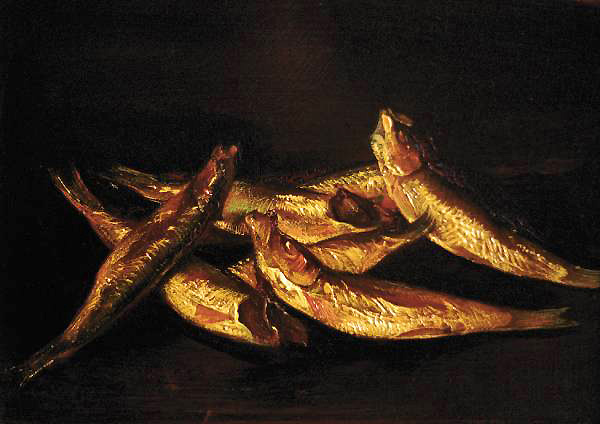 As children we have to learn the three-dimensional view. The pictures are displayed in a two-dimensional projection on the eyeground (fundus of the eye), similar to the canvas of the painter. In the beginning of our life, we have to discover the materiality of the real world through the combination of the eyes and sense of touch.
As children we have to learn the three-dimensional view. The pictures are displayed in a two-dimensional projection on the eyeground (fundus of the eye), similar to the canvas of the painter. In the beginning of our life, we have to discover the materiality of the real world through the combination of the eyes and sense of touch.Due to the accumulation of innumerable small experiences, we collected our knowledge of the material world which allows us to orient ourselves in daily life. Such knowledge serves purposes other than artistic ones. For the Transcendental Painting, it's an encumbrance which obscures the viewer’s immediate perception. Art enables us to see the objects in another way from that of everyday life, brings the items out of banality and opens the eye to see what is "behind", in the direction of the truth….
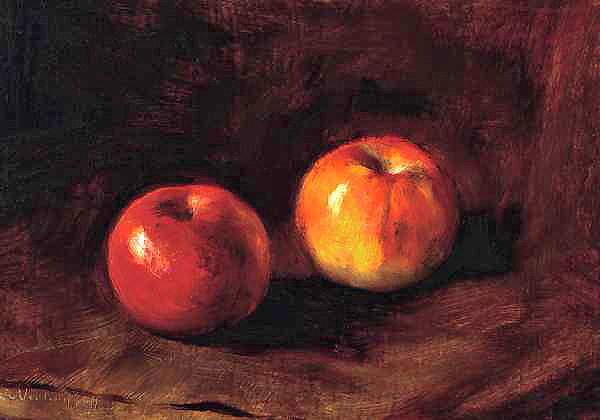 If we unlock the eye from the sense of touch and exclude all our collected knowledge, the eye is free again for its own activity. When the painter unintentionally focuses himself on the pure vision, another message appears than the one necessary for everyday life. Everything which is acquired has to be "forgotten" so that the process of seeing will occur purely and impartially. The view fixes on the object while all associations and former experiences should be forgotten. Thus a meditative course of events begins.
If we unlock the eye from the sense of touch and exclude all our collected knowledge, the eye is free again for its own activity. When the painter unintentionally focuses himself on the pure vision, another message appears than the one necessary for everyday life. Everything which is acquired has to be "forgotten" so that the process of seeing will occur purely and impartially. The view fixes on the object while all associations and former experiences should be forgotten. Thus a meditative course of events begins.The best works of the true geniuses such as Rembrandt, Rubens, van Dyck, Michel-Ange, Titian, Guardi, Velazques, Goya and Turner prove that these masters worked this way – consciously or unconsciously. With a similar view to these artists, Chardin formulated his artistic process, although he, as well as Egon von Vietinghoff, did not call it "meditation".
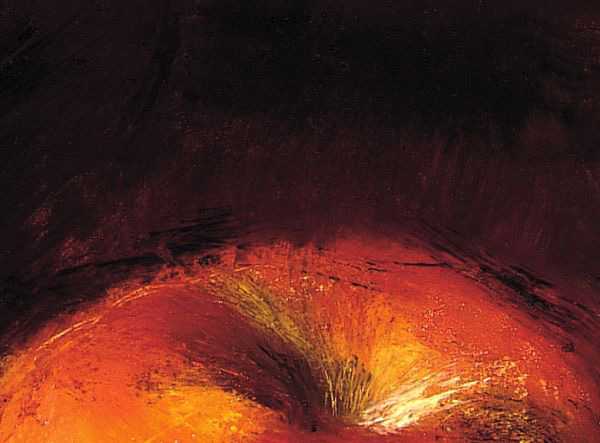 In the case of strict visual contemplation, a colorful object on black ground is only a colorful plane in a dark plane. Then, there is no difference in the content between itself and all other parts of the field of vision as it figures only as a "placeholder" of the color, i.e. it does not matter what the color is representing. This is a manifestation of real abstraction! Due to its reduction to color, the subject does not exist anymore as a specific thing.
In the case of strict visual contemplation, a colorful object on black ground is only a colorful plane in a dark plane. Then, there is no difference in the content between itself and all other parts of the field of vision as it figures only as a "placeholder" of the color, i.e. it does not matter what the color is representing. This is a manifestation of real abstraction! Due to its reduction to color, the subject does not exist anymore as a specific thing.After having radically eliminated the meanings of a subject, its fixed outlines disappear with its definitions. Thus, the world appears only as an interaction of colors and its shades in a color context, i.e. as a color symphony, showing a different aspect than the usual. Egon von Vietinghoff liked to immerse himself into this miraculous world of colors, penetrate the superficiality of the objects and reach their true essence.
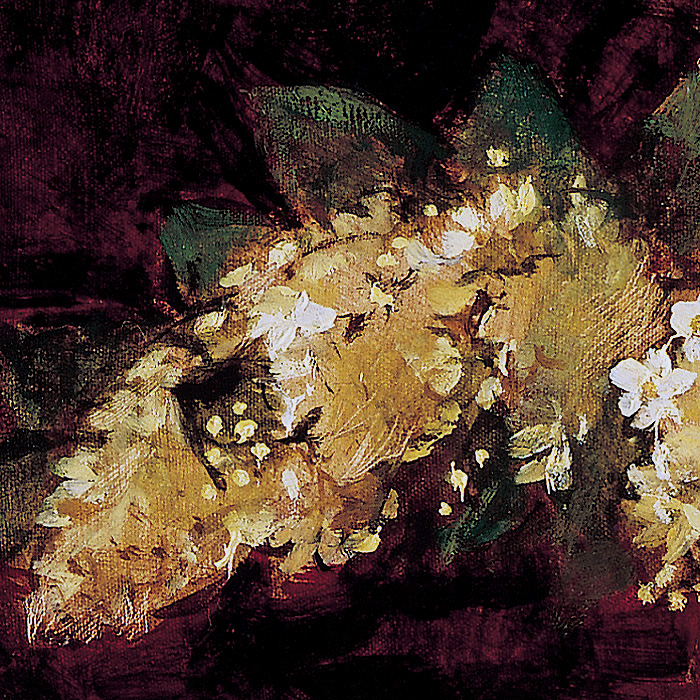 Similar to his painter colleagues, mentioned above and others as well, he did not want to copy the measurable properties of the objects as "true" and exactly as possible. The genre of photography provides more perfect results in this sense, anyway.
Similar to his painter colleagues, mentioned above and others as well, he did not want to copy the measurable properties of the objects as "true" and exactly as possible. The genre of photography provides more perfect results in this sense, anyway.Therefore, the importance of an artist's subject completely lies in its sensual appearance, in its pure phenomena of color.
When the transmission of an idea is to the fore, the "pure painting" is limited and can be seen rather as an illustration.
Such paintings respond to knowledge and not simply to the pure visual experience of a singular vivid color spectacle.
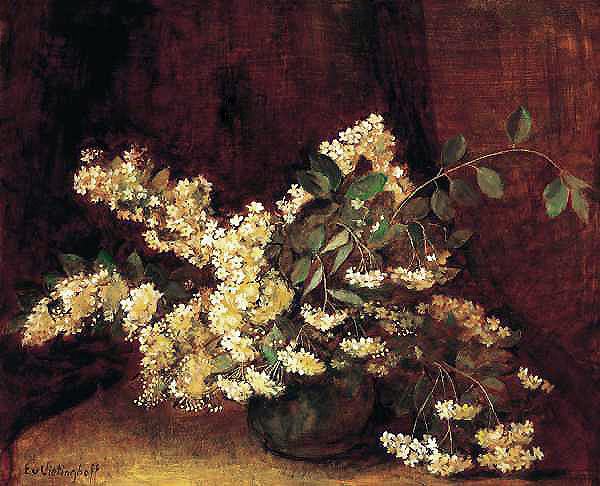 Despite of the fact that colors are related to objects, real or imaginary ones, this strict perception of pure vision is quasi abstract without leading to truly abstract paintings.
Despite of the fact that colors are related to objects, real or imaginary ones, this strict perception of pure vision is quasi abstract without leading to truly abstract paintings. The artist transforms the three-dimensional objects into color surfaces next each other, returning to the most basic perspective before we acquire the three-dimensional view.
The beholder is able to re-transmit the color surfaces into the three-dimensional picture without any problem as he is used to seeing in a three-dimensional way.
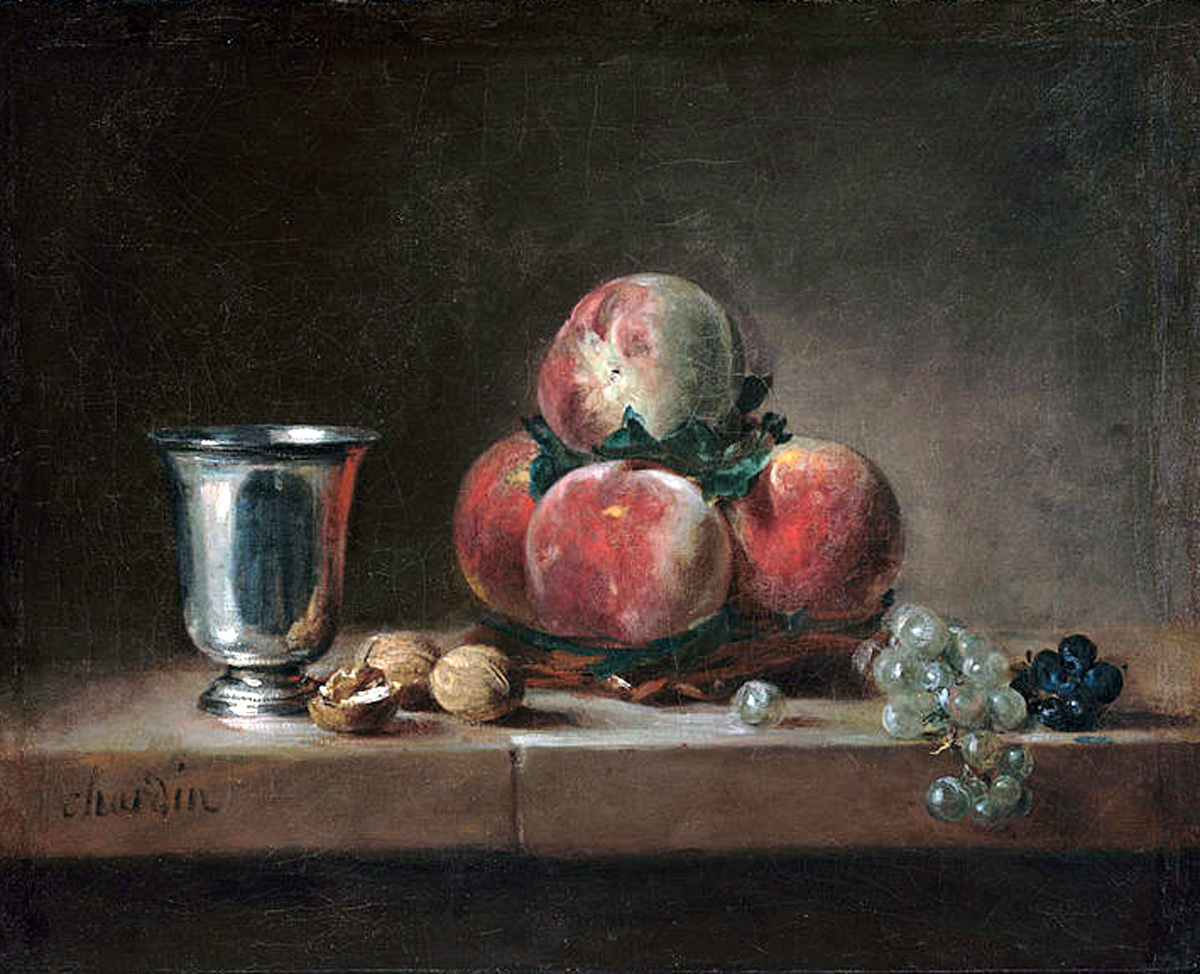 Painters can learn to see the objects as not isolated in space. In order to overcome the daily life habit of perception, Vietinghoff submitted himself to regular exercises which made him ready to receive the artistic inspiration.
Painters can learn to see the objects as not isolated in space. In order to overcome the daily life habit of perception, Vietinghoff submitted himself to regular exercises which made him ready to receive the artistic inspiration. Thus, his School of Pure Vision is the preliminary stage of transcendental understanding and preferable to any kind of drug.
During his intensive studies of the paintings of the Old Masters he recognized that this way of pure visual contemplation was their guideline and enabled them to create true art.
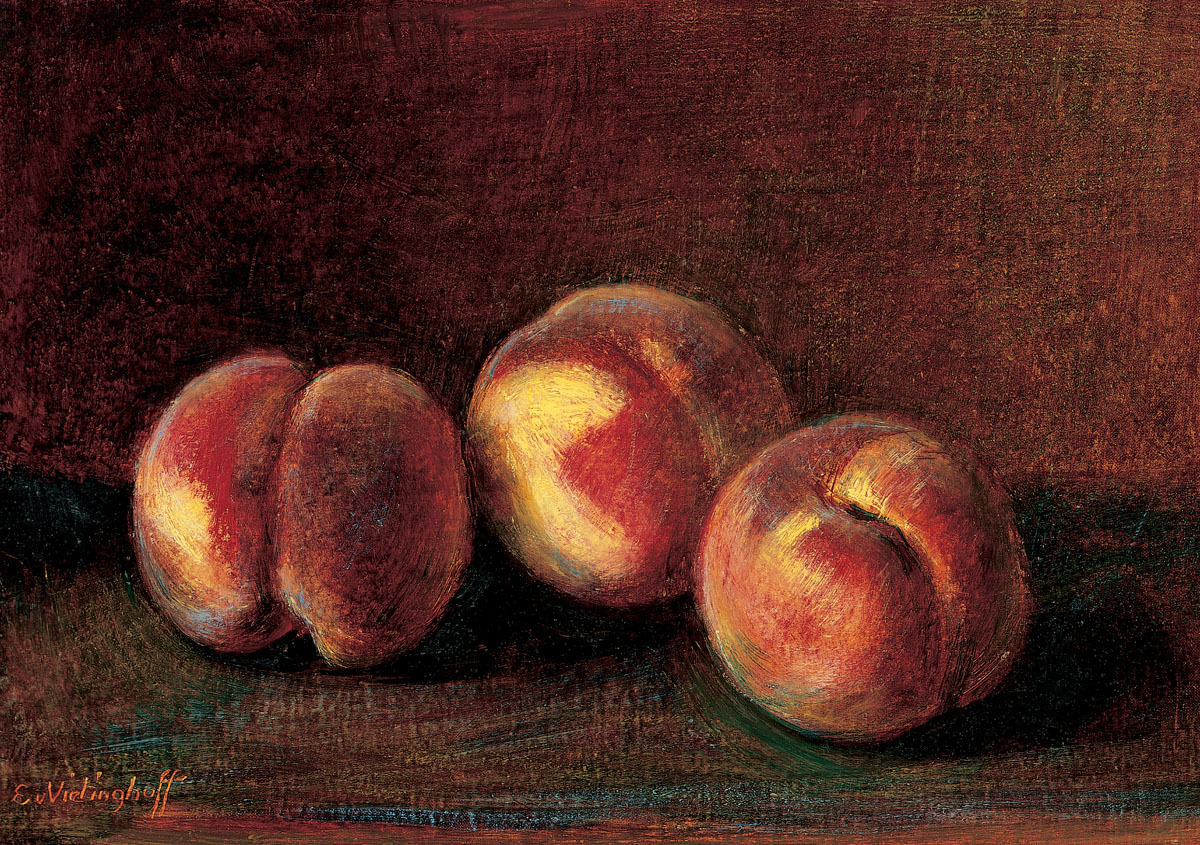 The basic attitude in this method of Pure Vision is to be both sober and amazed.
The basic attitude in this method of Pure Vision is to be both sober and amazed.On the one hand, Vietinghoff devoted himself to the subjects pragmatically and took the phenomena as they were without changing them with his will.
On the other hand, he was naively taken away by the miracle of the appearance of nature and therefore his creativity was stimulated.
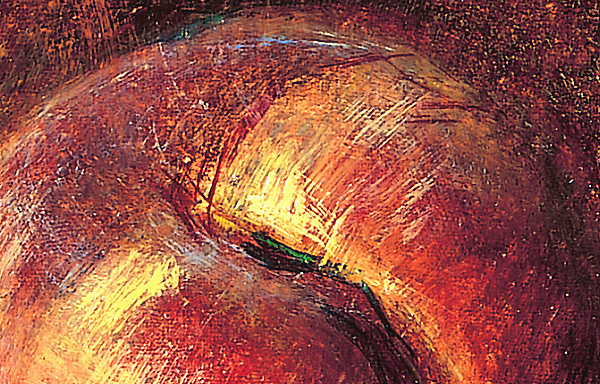 Both of these attitudes require total openness and preparation to receive the spectacle of color and light.
Both of these attitudes require total openness and preparation to receive the spectacle of color and light.In both attitudes there is no judgment and the ambitious and vain ego is eliminated.
The biased focus on precise reproduction or the inpatient anticipation of the inspiration limit the horizon and block the readiness as well as the artistic act of transformation.
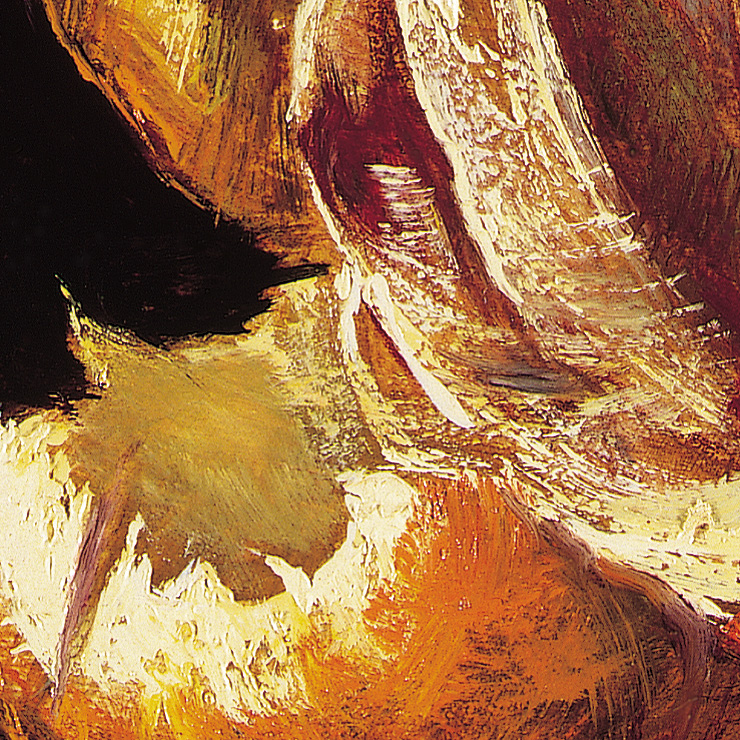 The realistic aspect, the naturalness, is often overestimated and thus mistakenly the reason for zealous observation. It restricts the perception to the exact description of the surface, is lost in details and nips the artistic imagination in the bud. The transcendental experience is prevented and the results are skillfully made pictures of cool realism.
The realistic aspect, the naturalness, is often overestimated and thus mistakenly the reason for zealous observation. It restricts the perception to the exact description of the surface, is lost in details and nips the artistic imagination in the bud. The transcendental experience is prevented and the results are skillfully made pictures of cool realism.Here, especially, the proverb is realized: "The whole is more than the sum of the details". From this perception of art (i.e. Naturalism), there emerge brilliant works in the sense of tricky pieces of craftsmanship, and so art is reduced to skillfulness.
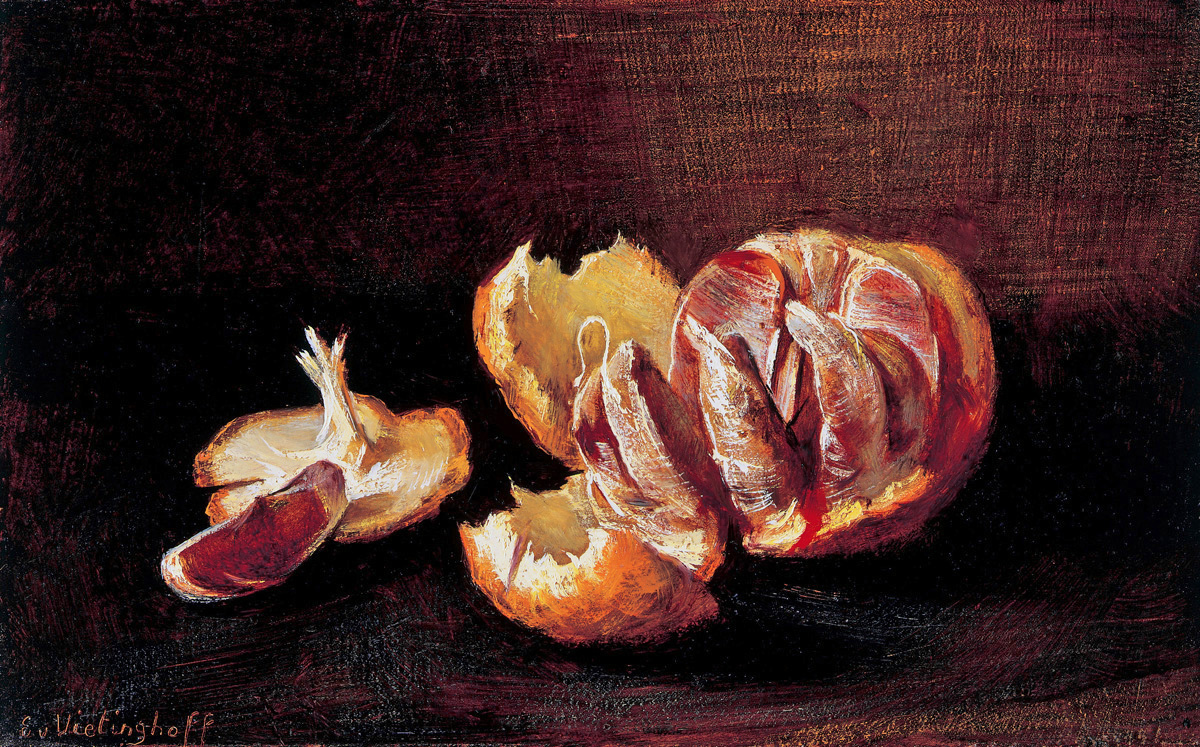 Also in the second aspect of the imagination and creativity, there is a danger that the artistic process may not unfold or even cannot take place, especially during the last hundred years when imagination and creativity were and still are replaced by a more or less original idea.
Also in the second aspect of the imagination and creativity, there is a danger that the artistic process may not unfold or even cannot take place, especially during the last hundred years when imagination and creativity were and still are replaced by a more or less original idea.Such a definite idea works like censorship in the mind; the look at the subject becomes narrow and the artist becomes blind of the true aspect of nature or arbitrarily remodels the natural reality with his own idea.
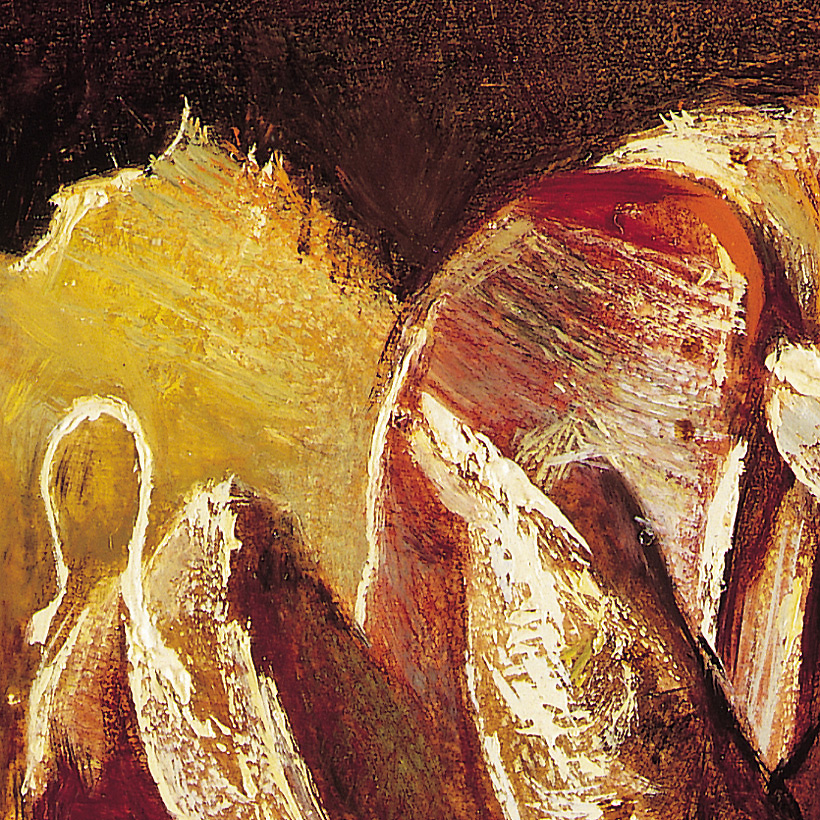 During his 10 years in Paris, Vietinghoff witnessed how well-known protagonists of modern art in the group of regulars thought up new trends of style or created them together with their managers and art dealers. Thus many styles were born intellectually, instead of visually, and were periodically launched on a large scale. The source of creativity was very different to the visual momentum of painting art.
During his 10 years in Paris, Vietinghoff witnessed how well-known protagonists of modern art in the group of regulars thought up new trends of style or created them together with their managers and art dealers. Thus many styles were born intellectually, instead of visually, and were periodically launched on a large scale. The source of creativity was very different to the visual momentum of painting art.Can the existing miracles of this world be reinvented? Does the singularity of the artistic expression increase with the degree of powerful influence on the given shapes? The concept of art which answers such questions in the affirmative produces works calling for attention, stimulating intellectual reflection or are exciting and rousing to the public in various ways. They should be named artificial rather than artistic.
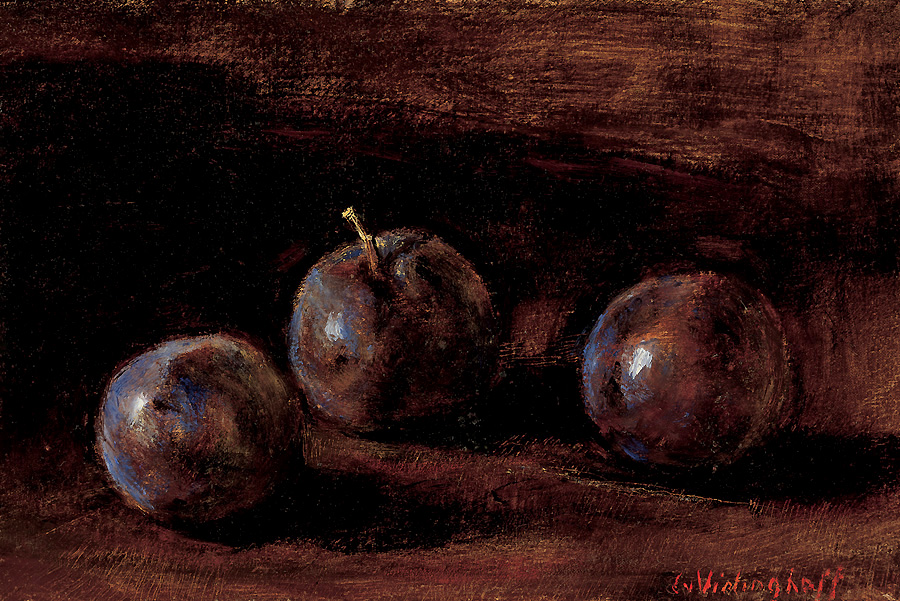 According to Egon von Vietinghoff, artistic creativity and individual view is either a gentle development or a spontaneous and eruptive process. However, it is always a constructive and transformative evolution rather than a destructive one, i.e. emerged from the natural perception and not forced by the intellect.
According to Egon von Vietinghoff, artistic creativity and individual view is either a gentle development or a spontaneous and eruptive process. However, it is always a constructive and transformative evolution rather than a destructive one, i.e. emerged from the natural perception and not forced by the intellect.While his contemporaries liked to disregard the natural and to impose their will on the natural phenomena, he mastered his technique and simultaneously served to transmit his transcendental insights.
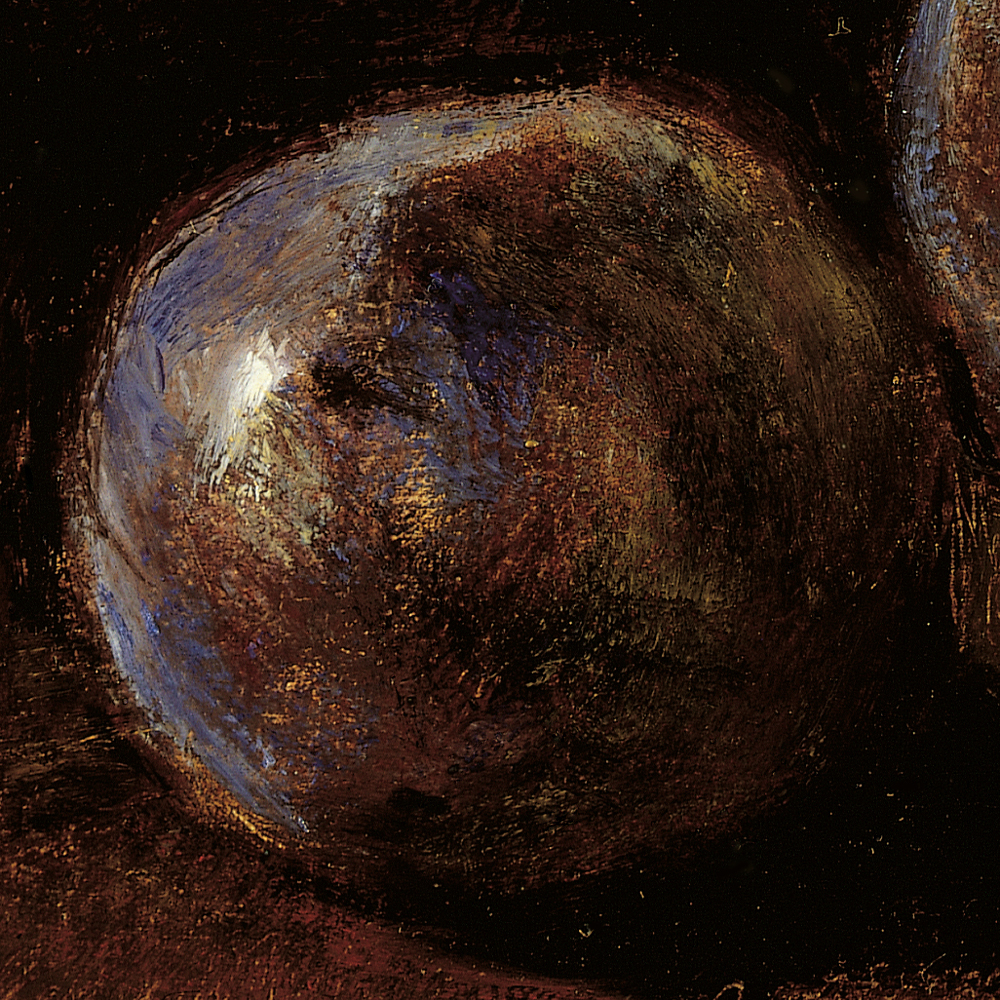 This is fundamental! So, what was Vietinghoff really doing? He compared the situation with the reception of the radio: he switched the first button on "receive" and then, with the second one, oriented his attention to a sender, i.e. a certain object. He also compared the artist painting in the meditative and transcending way with the archer in Zen Buddhism – both of them switch off their will and thoughts when meditating. The archer becomes one with the goal and "it" shoots; the painter immerses himself visually in his subject, becomes a tool of the transcendental experience and "it" paints.
This is fundamental! So, what was Vietinghoff really doing? He compared the situation with the reception of the radio: he switched the first button on "receive" and then, with the second one, oriented his attention to a sender, i.e. a certain object. He also compared the artist painting in the meditative and transcending way with the archer in Zen Buddhism – both of them switch off their will and thoughts when meditating. The archer becomes one with the goal and "it" shoots; the painter immerses himself visually in his subject, becomes a tool of the transcendental experience and "it" paints.This happens with the aid of the artistic imagination, which Egon von Vietinghoff does not confuse either with a witty idea nor a random impulse to play! He uses the term "artistic imagination" as a synonym for the sixth sense which, in the painter’s case, functions as a specifically visual intuition. This intuition is the vehicle to see through the material shape, to transcend it and to guide him to the transcendental experience.